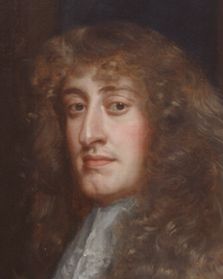It was busy day at the diocesan archive yesterday, catching up with a week's worth of correspondence and receiving five visitors - including an Australian Bishop, the Most Rev. Geoffrey Jarrett, DD (Bishop of Lismore). Having been present at the
Abbatial Blessing at Farnborough, he was spending a few days in London and had expressed a desire to see our collection. It's nice to meet a bishop with such keen interest in the English Martyrs and ecclesiastical architecture.

Anyway, I relaxed in the evening by accompanying Fr Richard Whinder to see Marie-Antoinette at the cinema just round the corner from the Archives. The film has had a mixed reception - the French critics at Cannes are said to have booed - but I loved it! I wasn't expecting a film with a clear beginning-middle-end nor was I looking for strict historical accuracy. But as an impressionistic portrait of a lost age, it was second to none.
Unlike any other film I've seen, you really felt as if you were there - at Versailles (and it helped, of course, that the film was shot 'on location' at the great palace). The film deserves at least Oscar nominations for costume design and photography. There were some impressive shots of the royal carriages trundling along and of the gardens of Versailles, full of courtiers as far as the eye could see. I must say Miss Dunst also cut a fine Marie-Antoinette, despite (or perhaps because of) the relative lack of dialogue. The film, I must add, was comparatively 'priest-friendly' and, with its 12A certificate, did not go down the path (which many other directors would have chosen) of including lots of sex scenes.

There were some minor irritations. Louis XV had a particularly strong, cowboy-like American accent (apologies to readers across the pond). Joseph II didn't resemble the obsessively enlightened despot that he was. The modern rock music (juxtaposed with the odd Baroque aria) didn't always work as a soundtrack. And - as always with big films - there were numerous liturgical errors in the ceremonial scenes, such as cardinals wearing chasubles under their copes (unless it was an ancient Gallican privilege?!). This is particularly tragic because the Versailles area is not short of a few traditionalist clergy who could have advised on such matters.
Worst of all, in my mind, is the fact the film stops at the Revolution, which was the Queen's finest hour. As Elena Maria Vidal (Catholic author of such novels as Trianon) has pointed out:
The Coppola film ends when the Revolution begins, at the moment when Marie-Antoinette came into her own as the daughter of a great empress and as a queen who would not forsake her husband or her duty, even when to do so cost her her life. The new generation of movie goers will be deprived of such an inspiration that would be so powerful on screen. Antoinette's Christian fortitude is ignored and her personal tragedy is trivialized amid a movie of froth. Without the spiritual depths, the depiction is shallow and incomplete.
However, at least Marie-Antoinette is very much the heroine and, in its quiet way, the film is a piece of historical revision and goes against the traditional 'let them eat cake' image of the French Queen (although the 'myth' of her affair with Count Axel von Fersen is repeated). For a historical critique of the film, see Elena Maria Vidal's website (raised biretta to Dappled Things). But, on the whole, the film gets a thumbs up from the Roman Miscellanist.
(All pictures copyright Columbia Pictures)
Labels: Diary, Films, Monarchy



























